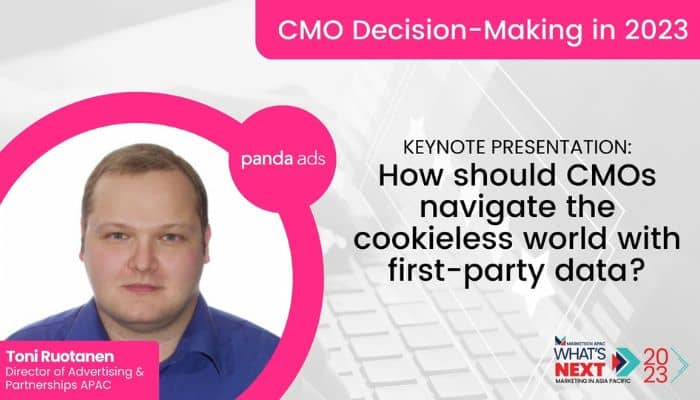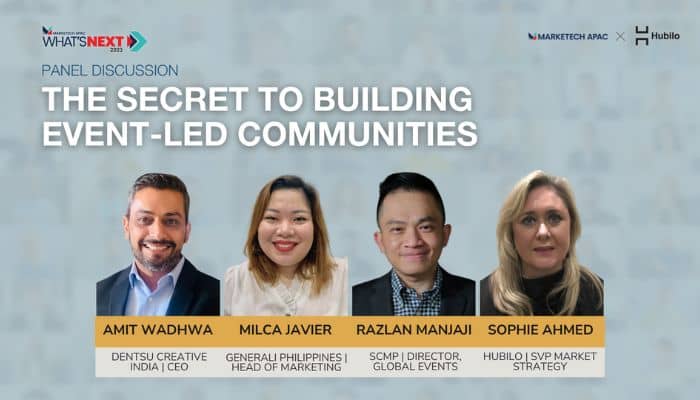Now more than ever, there is no excuse for marketing teams to not understand, or be able to react quickly, to adding customer value and driving commercial revenue. Not only are there more metrics than ever to work with (possibly part of the problem, rather than being the solution), but technology that’s rapid and inexpensive now exists.
At a time of increasing pressure on marketing budgets, every marketing director, CMO, or functional marketing leader should be putting customer insights and measurement at the top of their ‘we need a plan for this’ list for 2023.
But of course, this is easier said than done. With data and measurement being a cross-functional effort with analytics, insights, marketing research and technology teammates – how can marketing lead the way in being more agile and achieving more success?
In my experience as a CMO for a global organization with 90 marketers responsible for 100+ markets – our ‘unlock’ was agile marketing. Whilst not a new concept, McKinsey defines agile, in the marketing context, as “using data and analytics to continuously source promising opportunities or solutions to problems in real time, deploying tests quickly, evaluating the results, and rapidly iterating. At scale, a high-functioning agile marketing organization can run hundreds of campaigns simultaneously and multiple new ideas every week.”
I like to define it simply as a mindset of experimentation and team collaboration – with your customer deciding if your hypothesis is right.
While you can go ‘all out’ and adopt traditional ‘Agile’ processes like scrum masters and rigid sprint planning, in my experience, it is better to ‘steal with pride’ the parts of ‘agile’ that address your core problems which cause to reduce your effectiveness, vs simply adopting a process for the sake of it. Is your key issue speed to market? Is it putting the ‘customer voice’ into your decisions? Is it fear of getting things wrong? Digging into the heart of this will help determine which parts of agile are going to be most useful for your team.
Once you’ve decided how agile you might go, there are three pillars to agile marketing I recommend you put a plan in place for.
- People
People, and a growth mindset, are a critical part of ‘working with agility’. And it’s not just the marketing department that needs to have a solutions-focused, collaborative, and curious approach to make things work – but they should take the lead. Engage your full marketing team first to get them excited and committed to getting the ball rolling before reaching out to your wider network of teammates.
- Process
Agile doesn’t mean doing lots of stuff really fast, and hoping it works. In fact, it’s quite the opposite. Agile process has many deliberate ways of ensuring only the most important and useful things are done. And the things that aren’t are deprioritised or stopped. Whether that is daily stand-ups to ensure the team is working on the same thing and having the same latest information, retros to improve the next time, or tools and systems to track tasks and workflow – they are all there to ensure less of your time is on the ‘how’ and instead can be put into the ‘what’ (that’s the fun marketing stuff!).
My main tip here is to find your ‘process champions’. I’ve found there are a surprising number of them in marketing and having them lead and coach others through change is a great way to ensure full team alignment and support. - Customer
Getting your internal system humming is a great start. But to be truly agile, you need customer data, insights, and feedback to inform your strategy and implementation. With an agile approach, you need that input to be rapid and regular. There are a few ways that brands can do this effectively, each with its own pros and cons.
- Your own customer panel or ‘green room’: your own panel is great for getting deep expertise from a group of ‘super-users’, and it can also drive engagement and loyalty. However, if you’ve had a customer panel before, you’ll know they are quite a bit of work (and cost) to maintain, and they may also not be representative of your entire customer base.
- Focus groups: running focus groups is great for in-depth and qualitative feedback. They allow for exploration of topics and can generate new ideas. The downside is that they are typically slow to organise (and expensive) and again the group of 6-8 people may not represent your target market well enough.
- A/B tools: tools like Optimizely or testing tools within Meta and TikTok’s Ads Manager platforms are great for getting live, quantitative results. They do, however, assume a level of existing knowledge or experience with the elements being tested to know they appeal to and motivate your customer to take action. What does this mean? Unfortunately, ‘garbage in, garbage out’, is a key risk here. If your creative or message is not appealing in its individual elements, no matter of creative arrangement is going to fix that.
- Testing and insights platforms: specific online platforms are now available to provide rapid customer feedback on your messaging and campaign ideas. These tools often run as short surveys or user tests via access to a large pool of participants to help businesses make data-driven decisions. The downside is that many use databases or panels of respondents which can make it harder to reach hyper-localised areas and audiences based on behaviours and interests (rather than demographics alone).
Some audiences are also simply slow and expensive to reach. One platform that has overcome this is Stickybeak, which uses social media-powered targeting and recruitment to gain rapid feedback (effectively tapping into 4 billion people globally). Starting from a few hundred dollars per survey or test, the platform is changing the game for how many APAC marketers get insights early and frequently into new product and campaign development, specifically testing messaging and creative concepts.
My recommendation for running a truly agile marketing approach is to adopt an online testing and insights platform across your wider team to have regular, directional feedback from your target customers to inform execution. Without this, speed to market will be very difficult to achieve as too often debate, meetings and differing opinions stall delivery. Or worse, the wrong messages and creative have thousands of dollars invested into them and achieve poor results.
In summary, implementing an agile approach (vs ‘Agile’) is critical to improving marketing effectiveness. I encourage you to make a start by going on a discovery journey and reading articles and testing different tools to find out how you can implement improvements of your own.

This article is written by Anna Henwood, CEO of Stickybeak.











